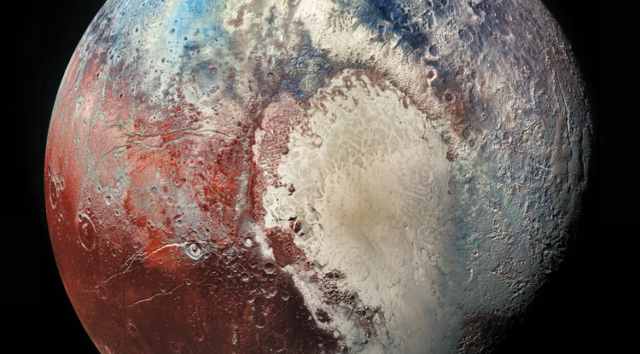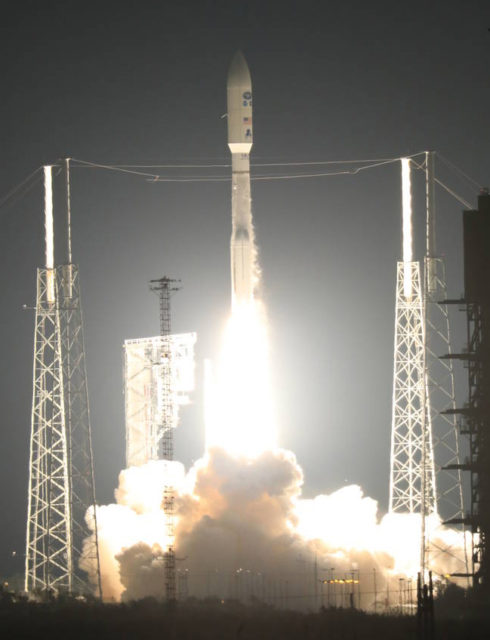NASA Launches NOAA’S Advanced Weather Satellite
On Saturday, 11/19/16, NASA launched the first of four advanced weather satellites for the National Oceanic and Atmospheric Administration, or NOAA, from the Cape Canaveral Air Force Station in Florida.
The satellite will maintain a geostationary orbit nearly 36,000 kilometers above Earth’s western hemisphere.
Called the Geostationary Operational Environmental Satellite-R Series or GEOS-R, NOAA says that the satellite will help it deliver more accurate and timely weather forecasts, watches and warnings.
According to NOAA, the GEOS-R will be able to examine the skies much faster than current technology, provide frequently updated high-resolution images of Earth’s weather, oceans and environment, and keep an eye on hurricanes and other dangerous weather.
The satellite will even monitor the sun and provide forecasters with critical information that will be used to issue space weather alerts and warnings.

Woman suffering from headache (Gonzalo Malpartida via Flickr/Creative Commons)
Women’s Migraine Headaches Linked to Stroke
A new preliminary study from the American Heart Association suggests that women with a history of migraines may also have an increased risk of stroke.
Researchers led by Dr. Cecil Rambarat, M.D. of the University of Florida in Gainesville, Florida studied over 900 women who at the time were being assessed for heart disease.
Of the women studied, 224 or about 25 percent of them reported a history of migraine headaches.
The study suggests that compared to the women who did not report any migraines, those who did were found to have an 83 percent higher risk of some kind of cardiovascular event such either a stroke or heart-attack within an average six-year follow-up.
Compared to those who didn’t have migraines, women with a history of migraine were also found to be a little more than twice as likely to suffer a stroke during the study.

FRB 150807 at different radio frequencies — red (lower frequencies) and blue (higher frequencies) (Dr. Vikram Ravi/Caltech)
Rare Astrophysical Event Provides Intergalactic Clues
A team of scientists have discovered one of those rare and mysterious astrophysical events called a Fast Radio Burst or FRB.
A fast radio burst is just that an incredibly quick but brilliant and powerful pulse of radio waves.
So far scientists are stumped as to exactly what causes this phenomena.
It’s thought that some 2,000 to 10,000 FRBs take place every day somewhere in the universe, but since they’re so fast and unpredictable only 18 have been spotted since their 2007 discovery.
Researchers who discovered the newest FRB say it’s the most brilliant and brief fast radio burst that has be found so far and that it could provide insight into the “cosmic web” a network of intergalactic material.
FRB 150807 was detected on August 7, 2015 at the Parkes Observatory, a radio telescope facility in Australia, after traveling a distance of more than a billion light years.
Fatty Foods While Young Could Impact Adult Brain Function
A new study, published in the medical journal Molecular Psychiatry, suggests that over indulging on a lot of high fat foods as a youngster could harm a person’s cognitive functions as an adult.
It’s no secret that children and teens love to eat junk food. These high-fat foods often provide young people with convenient and inexpensive items to eat.
Eating high-fat foods over a long period of time can lead not only to problems such as obesity and possibly damage young and still developing brains, but new research is showing that eating a lot of fatty foods during adolescence may impact the brain in adulthood.
The findings were made after researchers compared the brains of young and adult mice who were fed either high-fat or normal diets.
The first signs of impaired cognitive functions of young mice who ate a high-fat diet started to show after only four weeks and before they started to show weight gain.

In this image of Pluto taken by NASA’s New Horizons spacecraft, different colors represent different compositions of surface ices, revealing a surprisingly active body. (Image: NASA/Johns Hopkins University Applied Physics Laboratory/Southwest Research Institute)
Ice & Underground Ocean May Have Reoriented Pluto
A new study suggest that an accumulation of ice in Pluto’s Sputnik Planitia basin, along with the existence of subsurface ocean, may have played roles in the dwarf planet rolling on its side and reorienting eons ago.
Sputnik Planitia is located within the heart shaped region of Pluto called Tombaugh Regio.
Scientists say that the basin was probably created by a giant meteorite blasting away a large amount of the planet’s crust in that area making it much thinner.
This thinner crust could have allowed a subsurface ocean beneath it to well up toward the basin.
The studies suggest that the added mass of the accumulated ice and upwelled water in the basin area, combined with tidal forces between Pluto and its largest moon Charon, could have caused the planet to reorient itself.
Sputnik Planitia, which was formed northwest of its current location, rolled toward Pluto’s equator, ending up directly opposite the side facing Charon.
























Why this website don’t have different languages support?